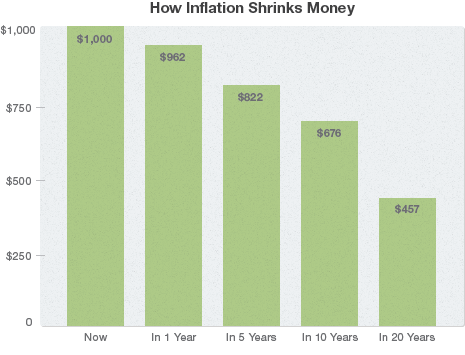This article is from our friends at LearnVest, a leading site for personal finance.
In your mind’s eye, picture all your friends, family, classmates, and colleagues.
About half of them are doing something very smart, and the other half—well, they’re doing the opposite.
And that very smart thing is investing.
Before you protest that investing is only for people with loads of spare cash, we’d like to inform you that everyone who draws a paycheck should be investing.
Unfortunately, according to a nationwide survey conducted by LearnVest and Chase Blueprint, only 48% of women and 56% of men have a 401(k) retirement account, and the percentage of people who have their own individual retirement account (IRA) is even lower: 40% for women and 48% for men. And these stats are just for retirement investing alone—even fewer people are doing any non-retirement investing.
We’re going to show why everyone who makes money should be investing, no matter how much money they make, and explain in what ways you should be investing and when.
Retirement: The Investing Must
Everyone who works has to save for retirement. (There are a few exceptions to this rule, but most of them apply in temporary situations, i.e. you are unemployed and living on savings.)
And if you’re saving for retirement, then you have to be investing—for two reasons:
Scary, huh? The good news is that investing usually grows your money more than inflation shrinks it. During the 20th century, the historical average rate of return was more than 10% per year. (Take that, 3% inflation!)
So, bottom line: If you plan to retire someday, then investing is the key to making that happen for you.
OK—so we’ve nailed down the main reason everyone needs to be investing, but there are many other reasons to invest besides reaching your retirement goals.
Planning to Pay College Tuition? The Other Investing Must
While this won’t apply to everyone, any parent who plans to pay all or part of their children’s college tuition should be investing. Tuition is rising at 6% or more per year, so parents will definitely need to harness the power of the market in order to make their tuition goals. Read our 101 on saving for college and our checklist on opening up an investing account for your child’s college education.
Investing Beyond Retirement
Now here comes the fun part. You can also invest money that isn’t designated specifically for retirement.
See, the government gives tax advantages to people who put money into retirement accounts—it allows you to escape paying taxes on that money either now or when you take it out.
Given how un-fun paying taxes is, you can imagine that everyone would store all their extra money in retirement accounts if they could. But of course, the government doesn’t allow that. It limits the amount of money you can put in retirement accounts. For instance, in 2012, you can only contribute $17,000 to a 401(k) or 403(b) account (though that will be bumped up to $17,500 for 2013). Similarly, you can only put $5,000 into an IRA in 2012 (and $5,500 in 2013).
So, if you’re putting the maximum away in both your 401(k) and IRA, you’re only putting $22,000 away each year for retirement. And that might not be enough. (You could take our Retiring in Style Bootcamp in order to figure out just how much you need to contribute every year to reach your goal.)
For that reason alone, you might want to open a separate investment account. In fact, you want to do that to save up money for any goal that’s more than five years away, such as coming up with a down payment on a home. That’s called the Five-Year Rule: In most cases, you should only invest money for a goal more than five years away.
When You’re Ready for an Investment Account
But just having a big shiny goal doesn’t qualify you to open an investment account just yet. After all, if the only thing you needed to have in order to start investing was the desire to have more money, then a lot more people would have investment accounts. (According to the LearnVest and Chase Blueprint study, just 28% of women do, and 40% of men.)
You also need to have your personal finances in pretty good order before you can think about putting money into an investment account. Here are the prereqs:
Once you meet all these requirements, you can open your own investment accounts. If you fit that bill, then check out our Investing 101 guide to get more details on how investing works. Then, head over to our checklist that will give you the steps to opening an investment account. And, if you know you’re ready, there’s no better place to start than our Start Investing Bootcamp.
Then, congratulate yourself on making it that much easier for you to reach your financial goals.
More From LearnVest


